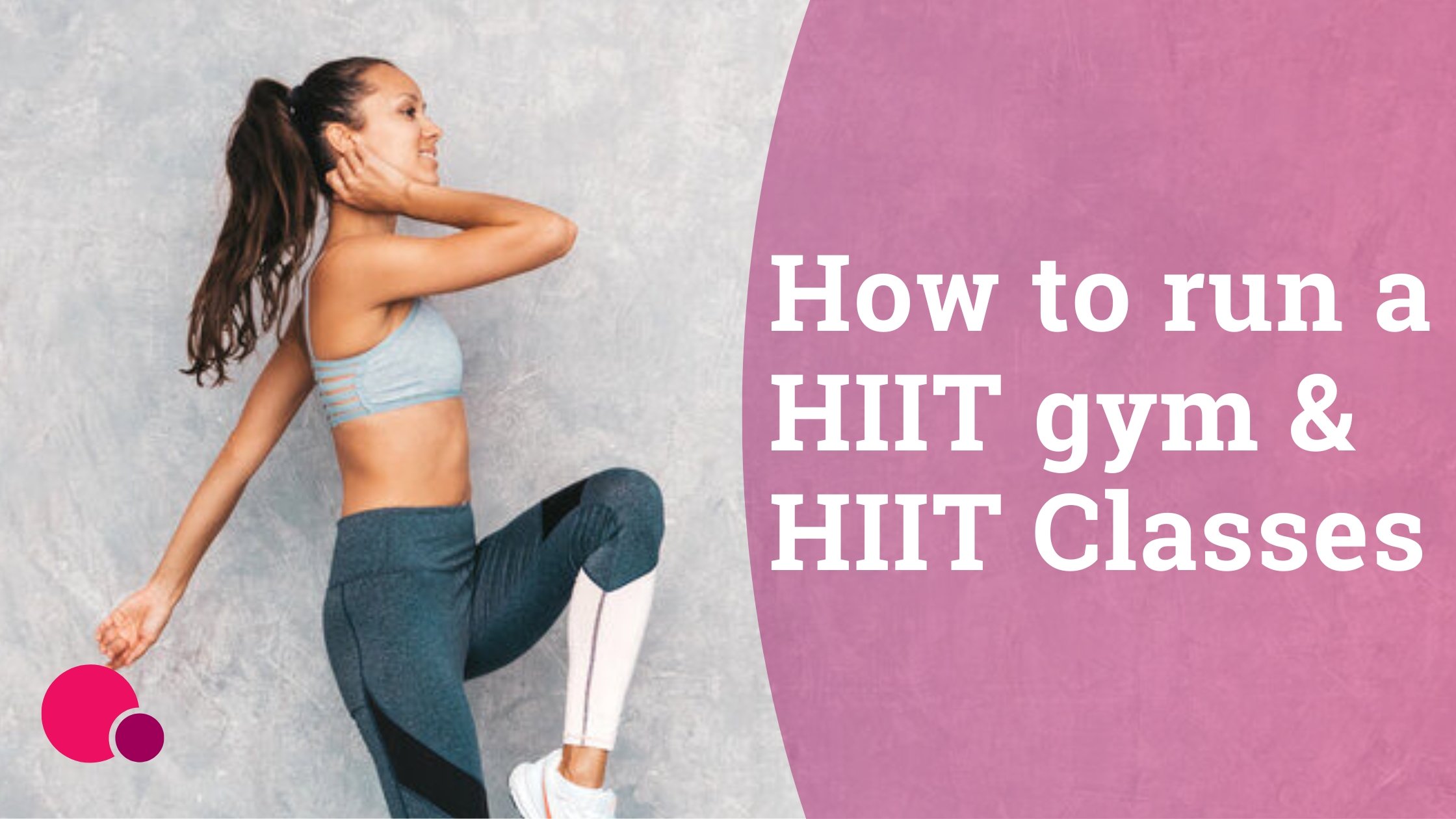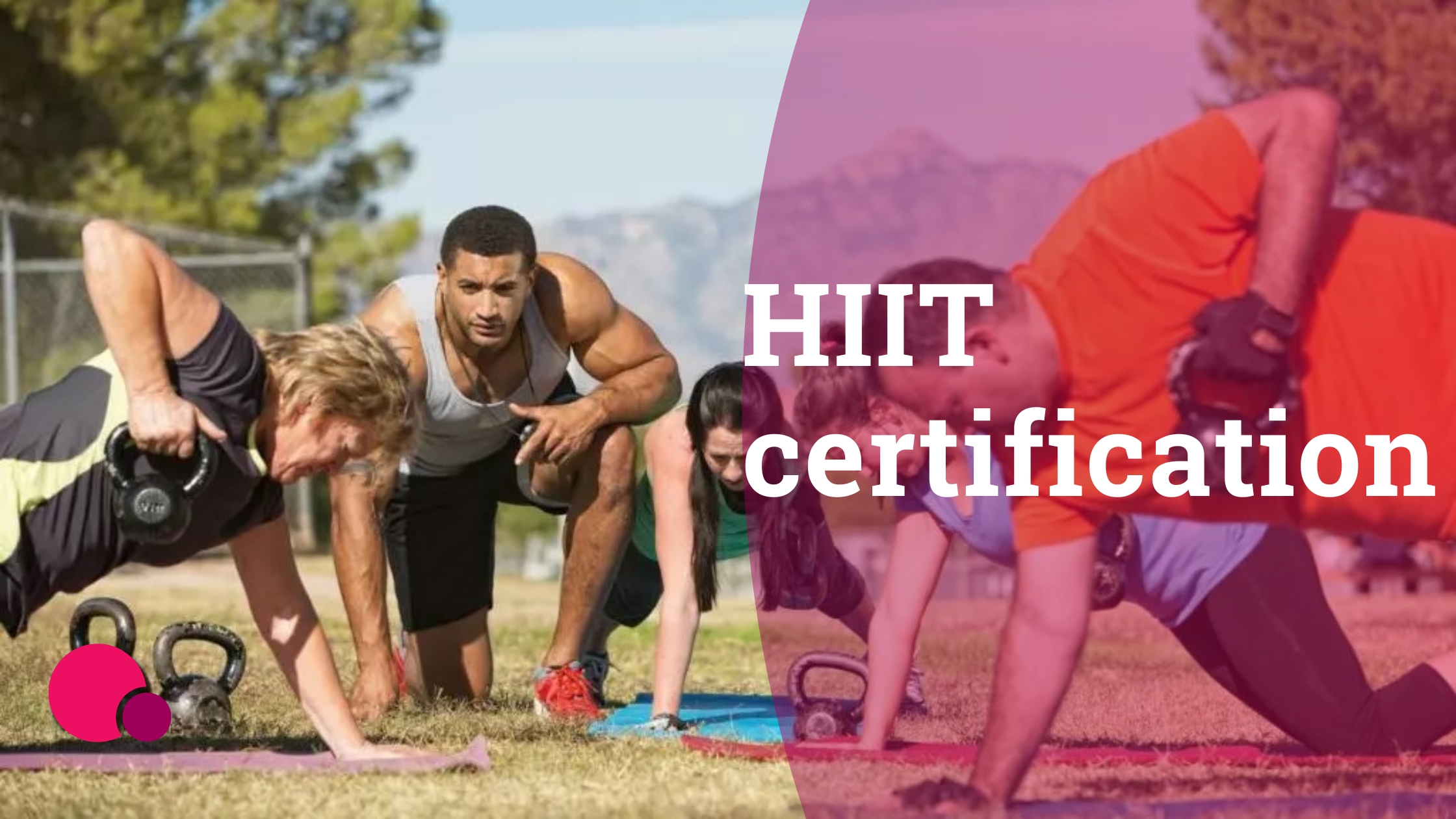Interval training has gained popularity due to its effective and varied workout styles, and here we will compare three types of interval training, namely High-Intensity Interval Training (HIIT), High-Volume Interval Training (HVIT), and Variable Intensity Interval Training (VIIT).
This comparison aims to help fitness business owners and professionals understand these different training methods. Knowing the specifics of HIIT, HVIT, and VIIT is crucial for creating diverse and effective workout programs.
Key takeaways
-
High-Intensity Interval Training (HIIT) is an efficient workout method that alternates high-intensity and lower-intensity movements, delivering results in less time than traditional cardio workouts.
-
High-Volume Interval Training (HVIT) focuses on longer stretches of moderate to high-intensity exercise with shorter rest periods, making it ideal for building endurance and muscle strength.
-
Variable Intensity Interval Training (VIIT) blends elements from HIIT and HVIT, offering versatility and a full-body workout that suits individuals of varying fitness levels and goals.
-
Understanding client goals and capabilities is crucial when choosing between HIIT, HVIT, or VIIT for fitness programs.
-
Each training style has its pros and cons, with HIIT being time-efficient and beneficial for weight loss, HVIT ideal for muscle building, and VIIT offering a balanced, adaptable workout.
-
Integrating these training styles into fitness business models can attract a diverse range of clients by emphasizing their unique advantages and ideal applications.
 High-Intensity Interval Training (HIIT)
High-Intensity Interval Training (HIIT)
What is HIIT?
High-Intensity Interval Training (HIIT) is an exercise method involving alternating rounds of high-intensity and lower-intensity movements.
Originating in the 1950s as sprint interval training for elite athletes, HIIT has evolved to include various forms like running, rowing, or cycling, each designed to push the heart rate to near its maximum.
Benefits of HIIT
HIIT's efficiency lies in its ability to deliver results in less time than traditional cardio workouts.
It's especially beneficial for busy people, offering a time-saving solution for staying fit. The workouts enhance oxygen transport and utilization, leading to improved endurance.
In terms of fat loss, HIIT is exceptional. Its high metabolic demand leads to significant fat burning. The hormonal response from HIIT helps in appetite control and metabolism boost, aiding in weight management.
Metabolically, HIIT enhances the body's VO2 max, reflecting improved oxygen use during intense exercise.
This leads to quicker recovery and greater endurance. Besides, HIIT's impact on ATP production boosts the body's energy mechanisms.
Implementing HIIT in fitness programs
Incorporating HIIT into fitness routines can vary. Models like Tabata, involving 20 seconds of intense work followed by 10 seconds of rest, or the 30:30 model with equally high and low-intensity intervals, are popular.
The key is gradual implementation, ensuring the body adapts without being overwhelmed.
Considerations and cautions
While HIIT offers numerous benefits, it's also demanding on the body. Limiting HIIT sessions to two to three times a week with adequate rest is crucial to avoid overtraining.
On non-HIIT days, engaging in lower-intensity activities that use different muscle groups is recommended.
Overdoing HIIT can lead to injuries or overtraining syndrome, characterized by prolonged fatigue and decreased performance.
It's also important to note that HIIT might not be suitable for everyone, particularly those with certain health conditions.
Always advise clients to consult a healthcare provider before starting a HIIT program.
High-Volume Interval Training (HVIT)
What is HVIT?
High-Volume Interval Training, or HVIT, is a form of interval training that combines longer stretches of moderate to high-intensity exercise with shorter rest periods.
It differs from HIIT in that it focuses on sustained, longer efforts rather than short, intense bursts. HVIT is categorized based on total active interval time, with sessions typically lasting over 15 minutes.
Benefits of HVIT
HVIT is particularly effective for building endurance and muscle strength. It pushes the body to improve its oxygen usage (VO2 max), which leads to better stamina and quicker recovery after workouts.
This makes HVIT ideal for athletes or anyone looking to improve their long-term activity levels.
For muscle building, HVIT stands out because of its longer exercise periods.
These extended efforts increase muscle engagement and recovery, contributing to muscle growth.
Think of a cyclist or a long-distance runner - their training often involves prolonged efforts that build endurance and muscle resilience.
Implementing HVIT in fitness programs
Designing an HVIT program can be flexible to suit different fitness levels.
A common approach might involve alternating between a 2-minute high-intensity exercise like sprinting and a 1-minute moderate-intensity recovery phase.
The key is to balance the high-intensity work with recovery to allow sustained effort without overwhelming the body.
For instance, a fitness trainer might design a 20-minute HVIT session for a client focusing on cycling, with intervals adjusted according to the client's ability and goals.
This adaptability makes HVIT a versatile tool in a trainer's arsenal.
Client suitability and safety
HVIT is safe for most people but should be approached cautiously, especially for those new to exercise or with specific health conditions.
Proper form and technique are crucial to avoid injury and maximize the workout's effectiveness.
Trainers should assess individual suitability and tailor HVIT sessions accordingly, ensuring that clients gradually build up their intensity and duration.
Variable Intensity Interval Training (VIIT)
What is VIIT?
Variable Intensity Interval Training, or VIIT, blends elements from High-Intensity Interval Training (HIIT) and High-Volume Interval Training (HVIT).
It's a dynamic form of exercise alternating between intense bursts, moderate strength and endurance activities, and low-intensity recovery periods.
Think of it like a workout buffet, offering a bit of everything in a shorter, more efficient package.
This makes VIIT ideal for those juggling a busy schedule or seeking variety in their fitness routine.
Advantages of VIIT
One of the primary advantages of VIIT is that it is versatile. Whether you are a beginner or an experienced athlete, VIIT adjusts to your level.
You can customize the intensity and length of your workout to suit your needs, making it an ideal choice for a wide range of fitness enthusiasts.
Another critical benefit of VIIT is that it takes a whole-body approach. This program isn't just about targeting one muscle group.
Instead, it's a full-body workout adventure that mixes high-, medium-, and low-intensity exercises, engaging various muscles and promoting a well-rounded fitness regime.
Additionally, this balanced mix reduces the risk of overuse injuries and keeps workouts exciting and comprehensive.
Overall, VIIT training is an excellent way to achieve your fitness goals, whether they be building muscle, losing weight, or improving your overall health and well-being.
By offering versatility, a whole-body approach, and a range of other benefits, VIIT has become a go-to option for fitness enthusiasts of all levels.
Designing VIIT sessions
Crafting a VIIT workout is like composing a symphony of exercises.
Start with a high-energy segment, shift to a medium-paced strength and endurance phase, and ease into a calming recovery period. This cycle repeats throughout the session.
Here's an example: Begin with 1 minute of jumping jacks (high intensity), followed by 2 minutes of bodyweight squats (medium intensity), and then 3 minutes of walking in place (low intensity).
This sequence can be adjusted in intensity and duration to suit your fitness level.
VIIT for diverse clientele
VIIT welcomes everyone, regardless of their fitness journey stage.
For beginners, it's a friendly introduction to structured workouts, gently ushering them into the fitness world with adjustable intensity levels.
Experienced athletes can find new challenges by increasing the vigor and variety of their routines, adding a refreshing twist to their regular training.
Deep dive into physiology and training responses
Understanding the impacts of High-Intensity Interval Training (HIIT), High-Volume Interval Training (HVIT), and Variable Intensity Interval Training (VIIT) on the body requires exploring the physiological aspects of interval training, which is essential for optimizing workout effectiveness.
This deep dive covers the fast glycolytic system's role in intense activities, how gender differences can influence training responses and the significance of Excess Post-Exercise Oxygen Consumption (EPOC) in recovery and fitness enhancement.
Energy systems and lactate buffering
High-Intensity Interval Training (HIIT), High-Volume Interval Training (HVIT), and Variable Intensity Interval Training (VIIT) each uniquely impact our body's energy systems and its ability to manage lactic acid. Imagine your muscles as engines that need fuel.
During intense exercises, they quickly use the readily available fuel (carbohydrates) and start breaking down fat and protein, producing lactic acid as a byproduct.
This is like an engine running hot and risking overheating.
However, our body has a natural cooling system, the lactate buffering mechanism, which helps delay muscle fatigue, allowing us to push a bit further in our workouts.
Training the fast glycolytic system
The fast glycolytic system is a key energy pathway in our body, primarily activated during short, intense bursts of activity, like sprinting or heavy lifting.
It's crucial for activities requiring a quick energy surge without oxygen.
For instance, we're explicitly targeting this system when designing a workout with a high work-to-rest ratio, such as 40 seconds of sprinting followed by 20 seconds of walking.
This approach helps enhance anaerobic power by rapidly training the body to generate energy for short, explosive efforts.
Gender differences in training response
Tailoring interval training programs to optimize results for each gender is crucial due to significant physiological variations that can cause different responses in men and women.
For example, consider two clients, John and Jane.
Research suggests that women like Jane might benefit more from HIIT sessions with shorter recovery periods than men.
Therefore, while John might perform optimally with longer breaks, Jane's training could be more effective with shorter rest intervals, allowing her to improve her high-intensity running speed and endurance more efficiently.
The role of EPOC in training
Excess Post-Exercise Oxygen Consumption (EPOC) refers to the increased rate of oxygen intake following strenuous activity, essentially describing how the body recovers and returns to its resting state.
It plays a crucial role in training, particularly in how the body restores itself after a workout.
Debunking the myth that EPOC causes excessive fatigue, this phase is actually beneficial for muscle recovery and growth.
For instance, post-exercise, the body works like a repair crew, fixing muscle tissue and replenishing energy stores, improving strength and fitness over time.
Additional training concepts
We're now going to explore modern training techniques that add variety to traditional interval training, like HIIT, HVIT, and VIIT.
We'll also discuss the importance of HIFT and multi-modal exercises for fitness goals.
High-Intensity Functional Training (HIFT)
Unlike unimodal training methods like HIIT, HVIT, and VIIT, HIFT combines aerobic and anaerobic movements and muscle-strengthening exercises.
HIFT is a highly effective exercise that improves endurance, strength, and mobility by engaging muscles more than repetitive aerobic exercises.
A study in PeerJ by McDougle et al. (2023) highlights the high-intensity nature of HIFT, as evidenced by markers like blood lactate concentrations and heart rate, underscoring its effectiveness.
Uni-modal vs. multi-modal approaches
While unimodal approaches like HIIT, HVIT, and VIIT focus on a single type of movement, multi-modal approaches like HIFT offer a varied and comprehensive fitness regime.
HIFT's exercise diversity can pose a challenge but brings the advantage of engaging more muscle groups, leading to broader fitness improvements.
Falk Neto and colleagues (2019) in Sports (Basel) emphasize the potential of HIFT in enhancing various fitness components, from metabolic stress to muscular endurance, strength, and power, making it a valuable addition to any fitness program.
Physiological responses and performance outcomes
The physiological impact of each training method, including HIFT, is profound. HIFT's functional nature requires coordination and balance while engaging multiple muscle groups.
This versatility makes it ideal for sports requiring complex body movements, such as football or basketball.
As mentioned in various studies, the adaptations in the body's musculoskeletal, cardiovascular, respiratory, endocrine, and immune systems highlight the comprehensive benefits of regular exercise training.
Practical application and programming considerations
Implementing HIFT in fitness programs involves thoughtful planning. Programs should be varied to prevent boredom and address the whole body, promoting cardiorespiratory and muscular fitness adaptations.
It's crucial to cater to advanced and novice individuals when designing group workouts, ensuring enough stimulus for all.
A typical HIFT session includes a warmup, joint mobility exercises, a task-specific warmup, a strength/skill phase, and a conditioning phase, concluding with a cooldown.
As detailed in contemporary research, this structure ensures balanced and effective training.
Comparing HIIT, HVIT, and VIIT
Target audience and goals
Matching the appropriate training style with client goals and capabilities is a cornerstone of effective fitness programming.
High-Intensity Interval Training (HIIT) is particularly well-suited for individuals aiming for quick weight loss, cardiovascular improvements, and high-calorie burn in a short time frame.
However, its intense nature may not be ideal for beginners or those with certain health conditions.
Studies like those by the Harvard T.H. Chan School of Public Health illustrate HIIT's effectiveness in these areas.
On the other hand, High-Volume Interval Training (HVIT) is better suited for individuals focusing on building muscle and endurance.
Its methodology of longer moderate-intensity exercises is beneficial for muscle growth and cardiovascular fitness. Yet, it may require more recovery time and may not be as time-efficient as HIIT.
Variable Intensity Interval Training (VIIT) offers a balanced approach, making it suitable for many fitness enthusiasts.
It's particularly beneficial for those seeking a varied workout that targets different muscle groups and offers a full-body workout.
VIIT's adaptability makes it versatile for people with varying fitness levels and goals.
Pros and cons comparison of HIIT, HVIT, and VIIT
As a fitness professional, choosing the right training style for your clients is crucial for their progress.
To help you make an informed decision, we've summarized the advantages and drawbacks of three popular interval training methods: High-Intensity Interval Training (HIIT), High-Volume Interval Training (HVIT), and Variable Intensity Interval Training (VIIT).
|
Training Method |
Pros |
Cons |
|
HIIT (High-Intensity Interval Training) |
- Effective for weight loss and cardiovascular health -Time-efficient, suitable for busy schedules - Improves blood pressure and VO2 max - Beneficial for overweight adults; may reduce visceral fat (Source) |
- Demanding, possibly unsuitable for beginners - Risk of muscle fatigue and injury if incorrect form is use |
|
HVIT (High-Volume Interval Training) |
- Ideal for building muscle and endurance - Comprehensive workout engaging multiple muscle groups - Promotes muscle strength and size improvements |
- Longer workouts requiring more recovery time - Less time-efficient compared to HIIT |
|
VIIT (Variable Intensity Interval Training) |
- Balanced workout engaging various muscle groups - Adaptable to different fitness levels and goals - Provides a comprehensive full-body workout |
- Requires more planning and organization - May be complex for beginners |
Integrating into business models
Integrating these training styles into business models can broaden a fitness program's appeal.
For HIIT, emphasizing its time efficiency and effectiveness in achieving quick results can attract clients with busy schedules.
Offering a variety of HIIT models like Tabata training can cater to diverse preferences.
HVIT can be marketed as a method for comprehensive muscle and endurance building.
Fitness professionals can design HVIT workouts that balance high and low-intensity exercises, making them appealing to those aiming for muscle growth and improved endurance.
VIIT's appeal lies in its balanced and versatile nature. Offering varied VIIT workouts that cater to different fitness levels can attract a broad client base.
Emphasizing its full-body workout approach can be particularly attractive to those seeking comprehensive fitness improvements.
In summary, understanding and effectively communicating the specific advantages and ideal applications of HIIT, HVIT, and VIIT can significantly enhance the appeal and effectiveness of fitness programs, catering to a diverse range of client needs and preferences.
FAQs
What are the main differences between HIIT, HVIT, and VIIT?
HIIT focuses on intense bursts of activity, HVIT involves high-volume training, and VIIT combines variable intensities in a single workout session.
Which is more effective for weight loss: HIIT, HVIT, or VIIT?
HIIT is generally considered the most effective for weight loss due to its high intensity and calorie-burning potential.
Can HVIT be suitable for beginners?
HVIT can be adapted for beginners, though increasing intensity and volume is important to avoid injury gradually.
How does VIIT cater to a wide range of fitness levels?
VIIT's variable intensity makes it adaptable to different fitness levels, allowing for a more personalized workout experience.
Which training method is best for muscle building?
HVIT is particularly effective for muscle building because it focuses on volume and endurance training.









